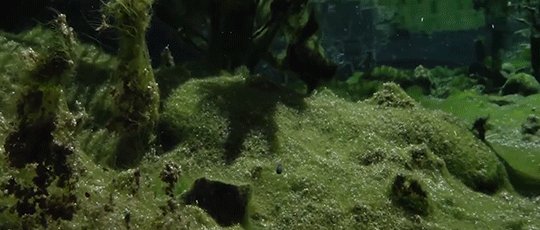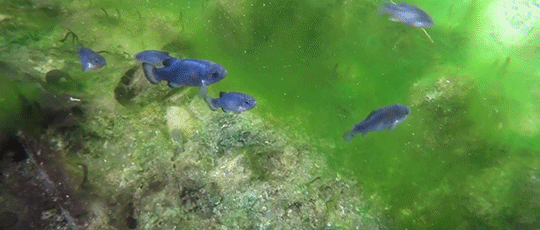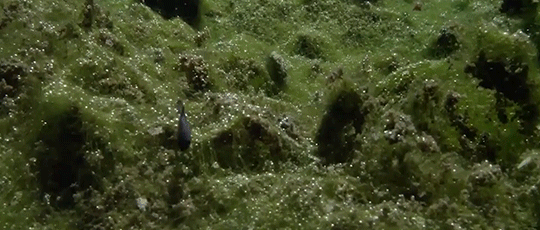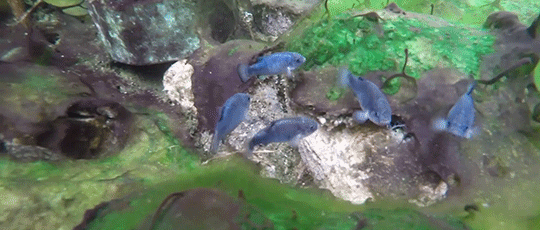Carter | 26 | they & he | queer | natural resources grad student | I have feelings about Critical Role, TAZ, ATLA, Star Wars, and The West Wing. AO3: ninjalanternshark.
Don't wanna be here? Send us removal request.
Text



KPOP DEMON HUNTERS (2025) dr. Maggie Kang and Chris Appelhans
5K notes
·
View notes
Text
The sentences "Asexuals can still have sex" and "Aromantics can still date" need to go up on the high shelf for everyone except aces and aros talking about their own experiences. From now on, everyone else has to use the revolutionary new phrase "Asexuals and aromantics can do whatever the fuck they want forever."
9K notes
·
View notes
Text
so net-mending season (may/june) in alaska is the worst part of the year imo because all we do all day every day is look for tiny holes in ENORMOUS nets to make sure the little tiny fish can't escape.
all day, every day, smelly nets, staring at them, never ending. it's already enough to drive a person to madness, but one of my coworkers used to EXCLUSIVELY play nightcore & rave bop bruno mars remixes when it was his day on the aux. starting at 7:30 am. and on those days i swear i had out of body experiences.
i've told people about it before but i didn't know i had any examples of it until just now my phone showed me a "on this day four years ago" memory.
1K notes
·
View notes
Text




The Devils Hole pupfish can only be found in the wild in one small but deep geothermal pool. When water levels dropped during the last ice age, this group was separated from other pupfish species and evolved independently in the limestone caves of Devils Hole.
They're currently critically endangered in the wild, and at one point the population even dropped to just 35. Since then many groups have been working together to monitor and save the Devils Hole pupfish. Part of that effort includes a massive off-site replica tank of the conditions, where about 100 Devils Hole pupfish live and are studied further. ©
1K notes
·
View notes
Text



Never miss an opportunity to enjoy a sunbeam.
355 notes
·
View notes
Text
Round 3 - Actinopterygii - Characiformes




(Sources - 1, 2, 3, 4)
Order: Characiformes
Common Name: “characins”
Families: 28 - Citharinidae (“lutefishes”), Distichodontidae, Crenuchidae, Alestidae (“African tetras”), Lepidarchidae (“Niger Tetra” and “Adonis Tetra”), Hepsetidae (“African pikes”), Tarumaniidae (“Muckfish”), Erythrinidae (“trahiras”), Parodontidae (“darter tetras”), Cynodontidae (“dogtooth characins”), Serrasalmidae (“pacu”, “piranha”, “silver dollar”, and kin), Hemiodontidae, Anostomidae (“toothed headstanders”), Chilodidae (“headstanders”), Curimatidae (“toothless characins”), Prochilodontidae (“flannel-mouthed characins”), Lebiasinidae, Ctenoluciidae (“pike-characins”), Chalceidae (“tucanfishes”), Triportheidae (“hatchet characins”), Gasteropelecidae (“freshwater hatchetfish”), Bryconidae, Iguanodectidae, Acestrorhynchidae (“freshwater barracudas” and “biting tetras”), Spintherobolidae (“piquiras”), Stevardiidae, Characidae, and Acestrorhamphidae (“American tetras”)
Anatomy: resemble Cypriniformes, but have a small, fleshy adipose fin between the dorsal fin and tail; most species have teeth; well-defined scales; have a Weberian apparatus, a series of bony parts connecting the swim bladder and inner ear
Diet: wide variety: many are carnivorous, eating prey ranging from fish to insects; some eat plants, nuts, and/or algae
Habitat/Range: Africa and Americas, are most diverse in the Neotropics; found in lakes and rivers
Evolved in: Late Cretaceous

Propaganda under the cut:
The largest characin is the Goliath Tigerfish (Hydrocynus goliath) (image 3), which has an average adult length of 1.5 m (4.9 ft) and a weight of 50 kg (110 lb), and a maximum recorded length of about 2 m (6.6 ft) and weight of 70 kg (154 lb). The Goliath Tigerfish is known for its large, interlocking, dagger-like teeth, used for biting into prey fish. On average each of its teeth can grow up to 2.5 cm (1 in) long, comparable to the tooth size of a Great White Shark!
The Bolivian Pygmy Blue Characin (Xenurobrycon polyancistrus) is the smallest characin, with adults growing up to 1.4 cm (0.55 in) long.
Many of the most popular freshwater aquarium fish belong to this order, namely the small, colorful, peaceful “tetras”, which are often kept in tropical community tanks.
Relative to body mass, the Black Piranha (Serrasalmus rhombeus) produces one of the most forceful bites measured in vertebrates. It is also the largest species of piranha, with a maximum length of 41.5–61 centimetres (1.4-2 feet). These fish are opportunistic and omnivorous feeders which will eat plants, fallen fruits, and animals smaller than themselves such as insects and small fishes. They are also scavengers, and will feed on carcasses within the river.
The Red-bellied Piranha (Pygocentrus nattereri) (image 1) makes sounds to communicate with other members of its school, usually when exhibiting aggressive behavior such as biting, chasing, confrontation, and fighting. When handled by humans, they emit a drumming-like sound, consisting of a low-frequency harmonic sound. The sounds created by piranhas are generated through rapid contractions of the sonic muscles and is associated with the swimbladder. The swimbladder may play an important role in sound production as a resonator.
Piranhas (subfamily Serrasalminae) are some of the most misunderstood fish. While the schooling omnivores do sometimes bite bathers and swimmers, and will feed on drowned corpses, serious attacks are rare, and the fish generally avoid humans. Only two fatal attacks are known. They are eaten by humans far more often than the other way around! Their reputation as voracious predators is due to a “prank” once played on former US president Theodore Roosevelt, when he visited Brazil in 1913. Local fishermen had blocked off part of the river for days, starving the piranha in anticipation of Roosevelt’s visit. While the president watched, the fishermen pushed a cow into the water, which was quickly torn apart by the starving fish. Roosevelt went on to describe piranhas as vicious creatures which could skeletonize a cow in seconds in his 1914 book Through the Brazilian Wilderness.
Pacu, herbivorous members of the Serrasalmidae family, have large, molar-like teeth, used for crushing nuts that fall from trees. Their reputation for “biting testicles” comes from a joke that got out of hand! In 2013, a pacu was caught in the Øresund, a strait between Sweden and Denmark. A professor stated in a news release that the fish use their teeth to crunch on nuts, so “anyone choosing to bathe in the Oresund these days had best keep their swimsuits well tied!” The statement got a bit too much publicity, leading to a rumor that pacu will actually bite people’s balls off. Goes to show that media literacy has been dying for quite a while now, and not just on Tumblr.
46 notes
·
View notes
Text

White-crested Helmetshrike (Prionops plumatus), family Vangidae, order Passeriformes, Kenya
photograph by Birdquest
4K notes
·
View notes
Text
43K notes
·
View notes
Text
stubbed my toe and accidentally did enough damage to launch myself into phase two where I have a more agile moveset but an unmistakable air of sorrow
38K notes
·
View notes
Text

he's finally growing chest hair!!!
2K notes
·
View notes







